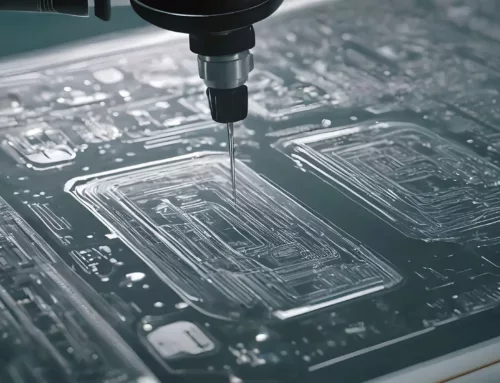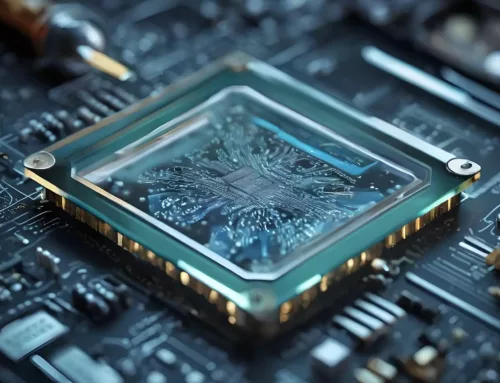Energy exists in various forms such as light, heat, chemical, fusion, fission, mechanical and electrical. But in essence, it is all just electron and proton movements or atoms splitting. The Natural fundamental rules for electrical forces are surprisingly simple. Electrical conductive forces moving electrons and protons between atoms and the exchanged forces are responsible for almost every single chemical reaction needed to produce the products and technologies we use daily in all industries and consumer products. Particle semiconductors are the backbone of industrial, consumer products, and global electronic services. Controlling and manipulating these particle forces is the foundation of improving overall efficiency in particle technology-driven industries and particle research as a whole.
Whether it is designing mesoporous particle structures to simply reducing static electrical build-up during production and storage, conductivity is one of many important particle characteristics that most industries need to deal with in varying degrees.
Powder technology relies on the ability to change and manipulate electrical forces that move electrons between particle atoms and understanding how these electron transfers can affect particle characteristics and interactions. An incorrect or imprecise particle manipulation can affect the interaction with other particles, which may inhibit the proper or intended electron movements, in effect altering the overall particle characteristics. This can lead to inefficiencies in for example biomedical products, lithium-ion battery substrates, and more, causing unwanted effects such as stability, thermal, and binding problems that affect a product’s intended design function and operation.
particle Conductivity
Many factors affect conductivity, particle density, particle characteristics, particle size, thermal tolerances, and overall temperature. The higher the temperature, the higher the particle resistance, its volatility, and its increased loss of energy and efficiency. Naming but a few examples, efficient particle control, and conductivity is particularly evident in the design of solar cells, lithium-ion batteries, semiconductors, folding touch screens, or medication that targets specific cells to deliver an anti-cancer drug. A balance must be found at all stages of production to finally get the most effective stable particle interactions intended for the final product. The final product efficiency is critical to ensure successful product sales and for ongoing research and development.
Particle Conductivity Concerns
A particle’s conductivity is expressed in many forms such as in the same or other particle-to-particle interactions, particle interactions with processing equipment, environment factors, pressure, moisture, radioactivity, particle density, temperature, and a particle’s electrostatic discharge potential to name a few. The latter can cause several issues in powder processing plants, storage silos, and during transport. Some issues are minor and are just time-consuming and sometimes a costly nuisance. To some interactions are rather explosive and hazardous. Electrostatic bulk particle discharge can potentially cause severe equipment damage and even death to facility workers. For example, when dust particles accumulate and get ignited by static discharge.
Examples of industrial processes that can form combustible dust particles are industries that perform mining, milling, polishing, or in a fairly new industry such as additive manufacturing, which uses many combustible powder materials that are prone to electrostatic discharge. The discharge is due to dust particles accumulation in enclosed factory production areas where electrostatic discharge, like a spark or other facilitating ignition sources, can trigger an explosion. This results in quick deflagration of the combustible particles which causes a cascade effect throughout the facility. An example trigger could be, because of a differential potential between the particles and the hopper wall causing the ignition.
Silos are another area of concern when it comes to potential explosions triggered by bulking brush discharge, created during bulking of charged insulated powder that accumulates in silos or storage containers. This process can be an effective ignition source for electrostatic-sensitive powders.
Particle Conductivity
The electrical conductivity of particles varies between conductive and nonconductive particles, Silicon particles for example are nonconductive but by adding 40% metallic particles the silicon can be made conductive to suit a manufacturing purpose. Particle sizes and geometrical properties affect their electrical conductivity, furthermore, particle conductivity can also be built up due to friction during conveying and transport. This happens when particles hit each other and pneumatic walls or other equipment parts during conveying build-up of an electrical charge. If equipment is isolated, there is a potential for static build-up and discharge. Electrical conductivity can also cause the statically charged particles to agglomerate together or adhere to the equipment’s walls. which impairs proper flowability and interferes with production or powder volume accuracies.Non or less conductive particle material i.e., nonmetals, even if just a partial layer of the particle could influence the entire particle’s conductivity capabilities. For example. Corrosion of silver parts during manufacturing in sulfur-containing environments is an unwanted effect and an industrial problem. Sulfur and silver particles, when exposed react to sulfur particles in the air (hydrogen sulfide), causing oxidization and forming a thin layer. This thin layer will affect the silver particles’ conductivity. In a digital era where particle conductivity plays an essential role in the functionality of our medication, electronics, and machines. It is therefore paramount in improving conductivity and particle coatings to help prevent limiting factors and improve particle conductivity.
Static electricity and powder flow
Electrostatic charges cause electrification of the bulk solids which affects proper powder flow and that can cause build-up on the hopper walls and eventually leads to the separation of large particles from smaller particles. This phenomenon changes the overall bulk powder density and the bulk powder volume which could be a concern in pharmaceutical production or other industries where exact measured volume plays a crucial role in final product quality. Particle material dispersed in a solution reacts slightly differently, in solution, smaller particles are mostly charged differently than their larger counterparts, sometimes negative or positive, which affects the overall powder consistency and powder flow, especially in coatings.
The effects
Finally, here is why particle research plays such a crucial role in modifying particle characteristics to minimize unwanted factors and why in the above examples conductivity is important when industrial coatings are electrostatically applied. As with statically charged particles adhering to hopper walls, overcharged particles tend to agglomerate and stick together. For example, low powder conductivity causes loss of material during coating processes and inconsistent coating layers, higher conductivity can cause an uneven surface due to the aforementioned coating material sticking together. There are many factors concerning particle conductivity, mainly smaller particles, that aside from having many benefits also are adversely affected by flow rate, gravitational drops, particle conveying velocity, and being more prone to static electrical charges, not to ignore that charged particles exert forces on each other including their electric fields within their space. Particle conductivity plays key roles in pharmaceuticals, biotechnology, oils and gas, food, feeds, plastics, additive manufacturing, metallurgy, etc. All of these conductivity factors can affect production processes and the quality of the final product in all industries.




